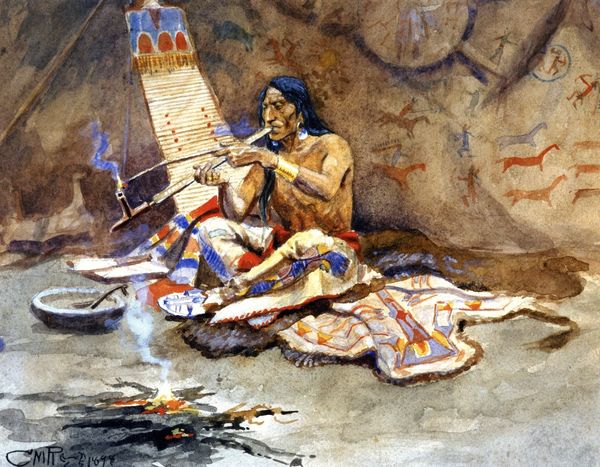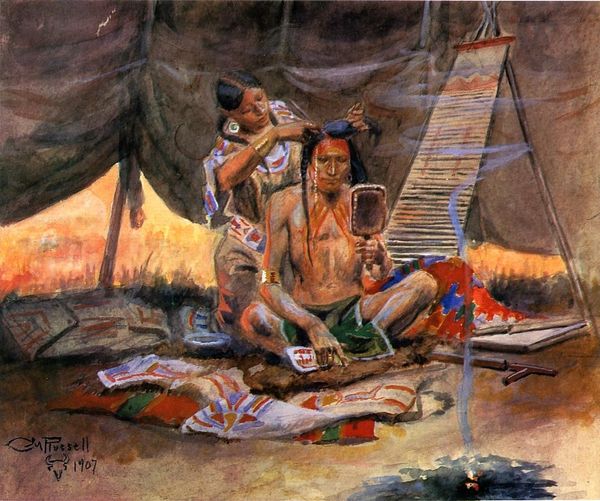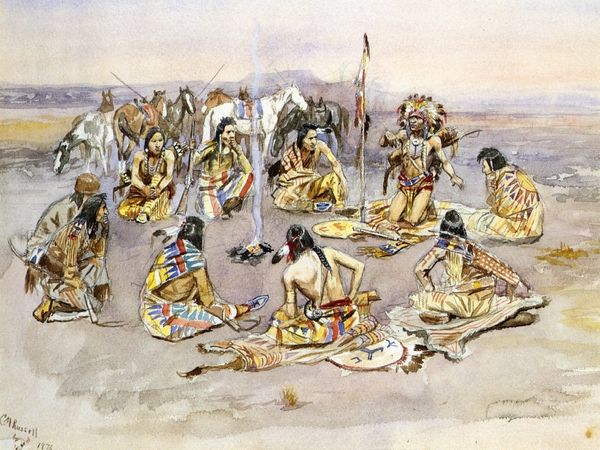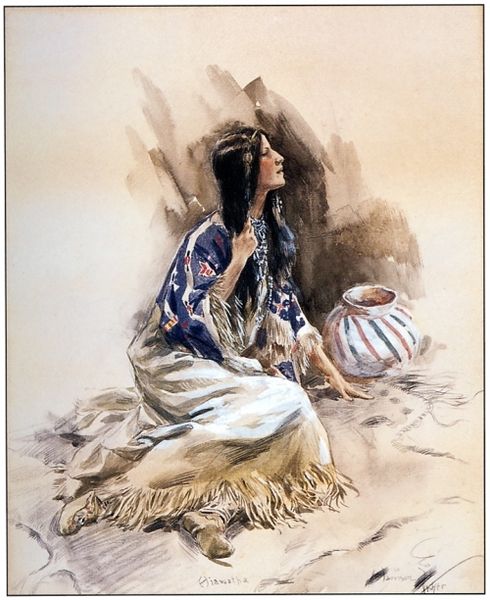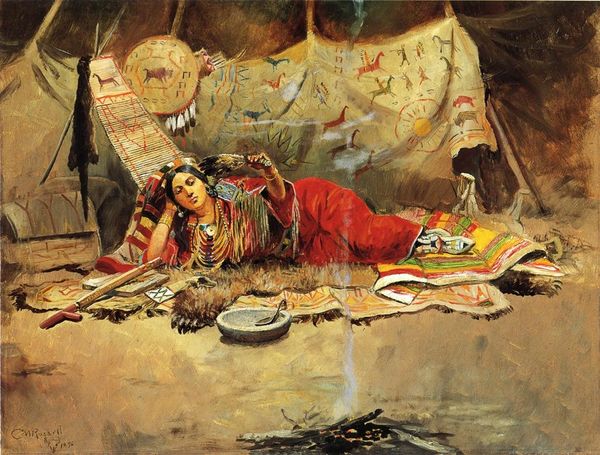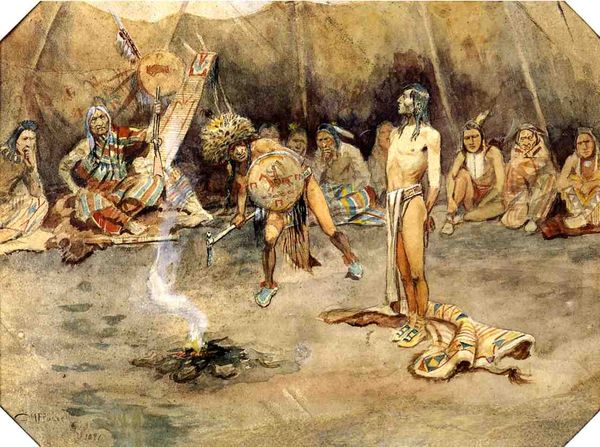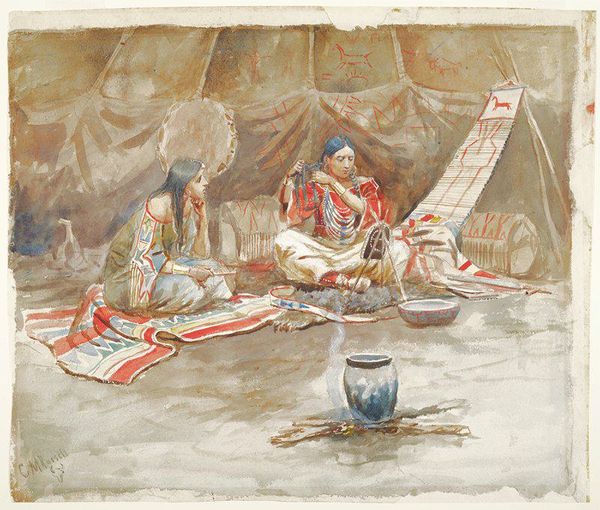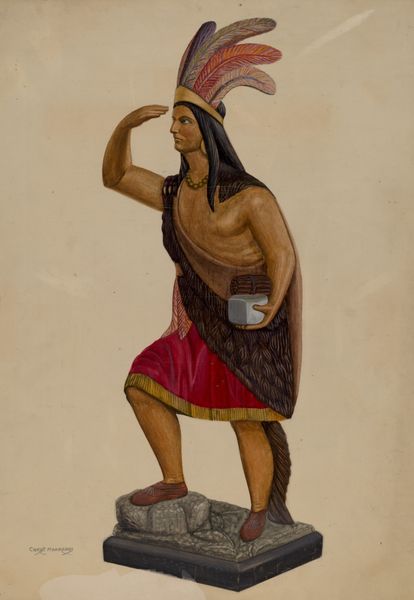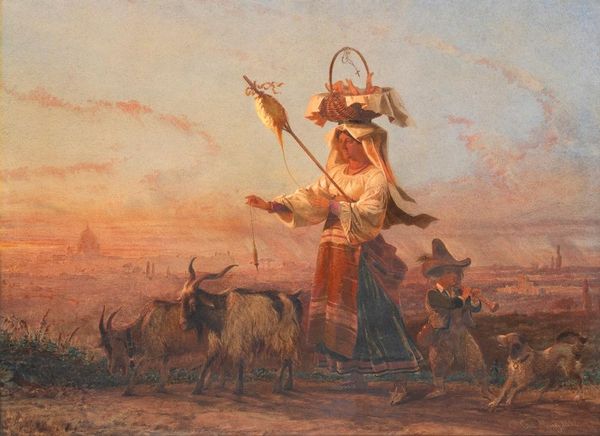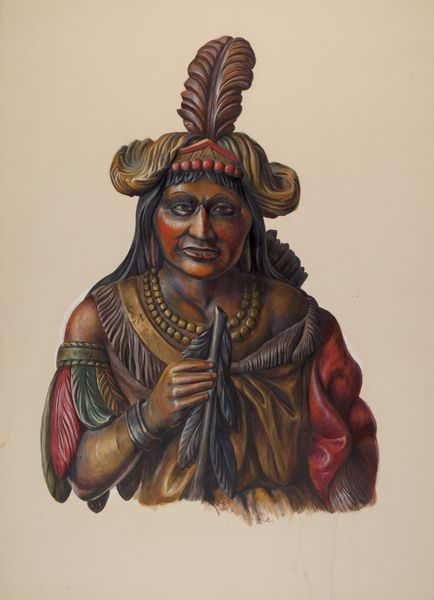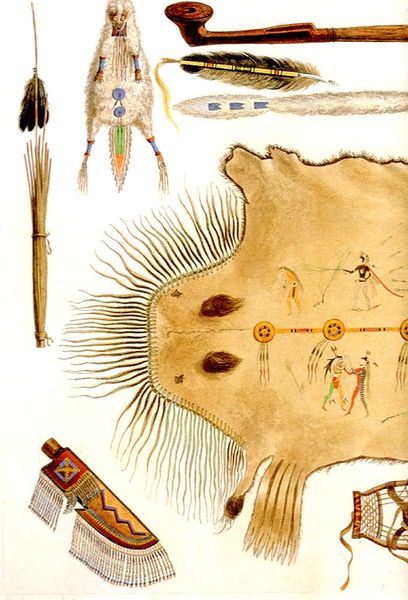
painting, gouache
#
gouache
#
narrative-art
#
painting
#
gouache
#
watercolor
Copyright: Public domain
Curator: Here we have Charles M. Russell’s 1899 gouache painting, "Indian Beauty Parlor." It captures an intimate scene of daily life within a Native American home. Editor: My immediate impression is one of quiet dignity. The earth tones create a calm atmosphere, and the details within the tent hint at a rich cultural narrative. Curator: Indeed, Russell was known for his accurate depictions of the American West. Considering the context of the period, how does this piece negotiate the representation of Indigenous people? Editor: Given Russell’s position within the colonial project, the artwork must be viewed with critical awareness. Despite depicting the activity of daily life, the risk is that Indigenous people are portrayed as relics from a vanishing past rather than active participants in a rapidly changing present. Curator: What about the production itself? It looks like gouache on paper, materials relatively easy to obtain and transport, appropriate for working outdoors. Editor: Thinking about labor, this points us towards issues around who is represented, and whose labor is being depicted within the image: not simply the acts of adornment here, but Russell’s work and economic output as well, sold on the market and consumed by the colonizing culture. Curator: Look closely. We can observe elements related to their craft and artistic traditions too, notably with the geometric patterns. What can you say about that, its materials, or origins? Editor: It's tempting to romanticize Indigenous life through visual elements, such as a painting of pictographs, beadwork, and painted bison, but this could perpetuate cultural appropriation. It risks consuming the surface level without genuinely reckoning with ongoing colonial structures. Curator: Agreed, such nuances demand consideration. I keep returning to his deliberate brushstrokes in portraying a very human moment. Editor: Absolutely, it invites consideration. "Indian Beauty Parlor" serves as a reminder of the importance of contextualization and ethical interpretation. By viewing artworks critically, we engage in dialogue about art history’s intersectional relation to identity and politics. Curator: Thank you. Such conversations allow for the reassessment of our preconceptions while engaging actively with both historical context and our present. Editor: Precisely, and approaching the past through critical perspectives creates the conditions for an informed present.
Comments
No comments
Be the first to comment and join the conversation on the ultimate creative platform.
